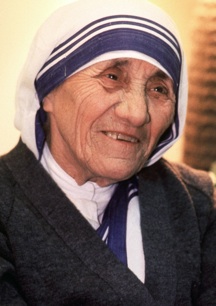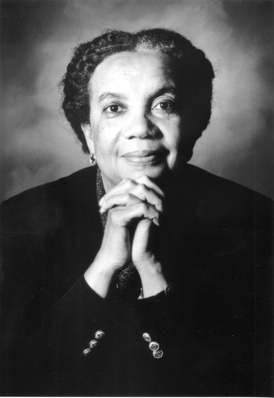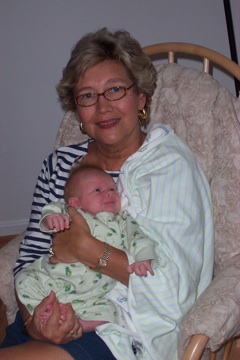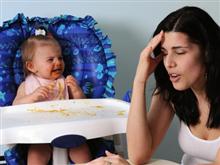I’m getting ready for Mother’s Day!
They are activists, humorists, Holocaust survivers, writers, first ladies, and missionaries. But first and foremost, they are moms. And, in my opinion, some of the best. As a relatively new mom, I could learn a lesson or two from the veterans. So here is a list of my blue-ribbon picks.
1. Erma Bombeck.
She was the funniest mother in America, with an uncanny ability to bemuse fellow moms with hilarious twists on cleaning toilets and carpools of whinny kids. For more than 30 years her clippings occupied the most coveted real estate in middle-class homes–the refrigerator–where she’d offer invaluable insight and a dose of comedy amid lost socks, bad report cards, and dirty laundry. In her more than 4,500 columns syndicated in 900 papers nationwide, she confessed her imperfections with a refreshing, self-deprecating humor that became her trademark.
Fueled by the idealized picture of TV mothers such as Harriet Nelson (“Ozzie and Harriet”) and Jane Wyatt (“Father Knows Best”), Erma won the hearts of housewives when she admitted that her kids “were the ones the prime-time mothers forbade their kids to play with,” and if she’d raise her hand to wipe the hair from their eyes, “they flinch and call their attorneys.”
She began writing her column, “At Wit’s End,” in 1965 at age 37, when Matthew, the youngest of her three children, started school. Within a year, she gained a huge following as her words were printed in newspapers across America, and eventually between the covers of 15 bestselling books. Diagnosed with polycystic kidney disease at the age of 20, Erma eventually suffered from kidney failure, and died in 1996 of complications from a kidney transplant at the age of 69.
2. Barbara Bush.
From the first minute she entered the public eye during her husband’s campaign for political office, she became “everybody’s grandmother,” exuding a rare warmth and genuineness, keen whit and forthrightness, that won her enormous popularity throughout the country and abroad. Perhaps her relaxed manner and sincere compassion evolved from the hardship of losing her first daughter, Robin, to leukemia when the little girl was not quite four, a tragedy that the former first lady says will make her husband George and her “love every living human more.”
As the mother of four sons, one daughter, and 14 grandchildren, she fulfills her role as America’s endearing grandmother by reading aloud stories to children at schools or as part of her national radio program called “Mrs. Bush’s Story Time,” and by her tireless efforts for children’s literacy.
3. Donna Martin.
Two kids are enough headache and hassle for the average American family. But not for the Texan-native mom of nine-year-old daughter, LaDonna, and 15-year-old son Princeton, who convinced her husband, the pastor of Bennett Chapel Missionary Baptist Church, to adopt four neglected and abused kids. She received her inspiration from her own mother, Murtha Cartwright, who gave birth to 18 children and raised them in the small, predominantly African-American community of Possum Trot, near the Texas-Louisiana border.
Despite the extra attention her developmentally disabled son already demanded and her husband’s modest income that barely fed the family, Donna drove 60 miles to the town of Lufkin to meet with a social worker to inquire how she could adopt at-risk children. In less than a year, Mercedes and Tyler joined the Martin family; Terri and Joshua came next.
Moreover, Donna and her husband encouraged their church’s congregation of 50 families to love and care for one or more of the thousand black children who are up for adoption in the Texas child-welfare system. The result was miraculous. By the summer of 2002, 76 children were placed in permanent homes, and even more in foster homes.
4. Martha Beck.
Place yourself in the manically competitive and over-achieving environment of Harvard, where girls schedule abortions when unplanned pregnancies threaten their academic and professional progress and a new dad is reprimanded by his professor for skipping a day of class to witness the birth of his first child. While pursuing your doctorate in sociology, you discover you have conceived a baby with Down’s syndrome. Your friends advise you, by all means, to terminate the pregnancy. But you carry the baby to full term. And you are changed forever.
You are Martha Beck, and you feel like it when you read her riveting memoir, “Expecting Adam”, about the little boy with Down’s Syndrome who brought more love, joy, and magic into her life than any Ivy League achievement could ever hope to. On every page of her autobiographical tale, she describes her painful and poignant transformation, in which she unlearns everything she was taught by the sharpest and shrewdest of minds in order to recognize and cherish true beauty and wisdom. And in doing so, she is an inspiration to all mothers caring for children with disabilities.
5. Mother Teresa.
She may not be a mother in the traditional sense, but she fed more mouths in one day than most moms do in a lifetime. Born as Agnes Gonxha Bojaxhiu in Skopje, Yugoslavia, she joined the Sisters of Loreto at age eighteen and moved to Calcutta, India where she took her final vows and taught at St. Mary’s High School for twenty years.

Every day of those two decades she saw the poverty and suffering of the people outside the convent wall, and so in 1946 obtained permission from her superiors to devote herself exclusively to working among the poorest of the poor in the slums of Calcutta. She started with a school for homeless children, and later opened clinics, orphanages, homes for the dying, leper colonies, and food centers. In 1950 she founded her own order, the Missionaries of Charity, which today comprises more than a thousand sisters and brothers and has spread to other countries in its many relief projects.
The modern saint died in 1997, but her mission “to care for the hungry, the naked, the homeless, the crippled, the blind, the lepers, all those people who feel unwanted, unloved, uncared for throughout the society,” lives on in the humble sisters who wear the plain white sari with a blue border, and in all those who have been inspired by her message to love well.
6. Bobbi McCaughey.
At age 29, Bobbi McCaughey gave birth to America’s first set of living septuplets, shocking medical experts alongside the general public. Add Bobbi’s first daughter, Mikayla, and that makes eight kids to dress in the morning, feed every three or four hours, potty train, and bathe before bed.
Within a few hours of Bobbi’s cesarean section on November 19, 1997, the small town couple of Carlisle, Iowa became instant celebrities, showered with lifetime supplies of diapers and baby food. But just because she’s famous and moved into a large home donated to the family doesn’t mean Bobbi’s days aren’t jampacked with a mother’s share of challenges times eight. Born prematurely, all seven were on ventilators as infants and two children suffer from cerebral palsy. With all outings impossible–even a trip to the local supermarket–you’d think this homebound mom would go stir crazy. But the devout Baptist doesn’t let herself get frazzled. Her secret? “You just have to trust that God’s going to take care of you,” she says, a bit of insight from a pro.
7. Raja Indurski-Weksler.
In June of 1941, German soldiers invaded Vilna, Lithuania and forced Raja Indurski-Weskler and her family to evacuate their home. After hiding her family in a series of “actions,” where Jews–packed in the Vilna Ghetto–were executed to fulfill a quota set by the German police, Raja became an unlikely hero, repeatedly risking her own life for the survival of her daughter.
The astute and determined mother first sewed jewelry and coins into the linings of her coat, using such treasures to barter her way to the “right,” where the soldiers directed the stronger women capable of working, and thus had a greater chance to live. At one point, she emptied her backpack of all possessions and hauled her 11-year-old daughter on her back, shoving her way through a crowd of desperate women fighting for their lives while soldiers kicked and beat them to determine the resilient.
Once at the concentration camp, Raja disguised her daughter as teenager, smuggling a stuffed bra and headscarves from the clothing depot where she worked so that the short, frail girl would appear taller and shapelier. That way the two would not be separated and the Raja could literally force her daughter to survive, which she did and lives to tell about in her powerful account appropriately entitled, Thanks to My Mother.
8. Marian Wright Edelman.
She was only 24 years old when she became the first African-American woman admitted to the Mississippi Bar, directing the NAACP Legal Defense and Educational Fund office in Jackson, Mississippi. A few years later she moved to the nation’s capital to join forces with Martin Luther King, Jr. as counsel for the Poor People’s March. There she founded the Washington Research Project, the parent body of the Children’s Defense Fund, whose mission is to ensure every child has a fair and healthy start in life.

As president of the CDF, Marian has spent thirty plus years fighting for better healthcare, education, and economic support for disadvantaged and at-risk kids, earning her the reputation as one of the nation’s leading advocates for children. She is the recipient of a host of honorary degrees and awards, such as the prestigious Presidential Medal of Freedom, and she is the proud mother of three sons: Joshua, Jonah, and Ezra.
9. Jacqueline Onassis.
She was the epitome of grace and dignity, forever remembered wearing her round sunglasses and headscarf, or three-strand pearl necklace, as an icon of style. But her good taste extended beyond her elegant wardrobe and her affinity for the classic arts. She demanded privacy, especially when it came to her family, taming an aggressive media to respect her distance, so that she could devote herself entirely to her children.
Always and everywhere, her kids came first. “If you bungle raising your children, nothing much else matters in life,” she once said. So while most people sought the limelight, she avoided it, and focused her attention on John Jr. and Caroline.
The reluctant celebrity became a notorious picture of composure and poise the country depended on in the days and years following the 1963 assassination of her husband. And in mothering a daughter and son with such unabashed loyalty and bravery amid a personal and public tragedy, she became a mother to a nation, until her death in 1994.
10. Nancy Johnson Guenin (my mother).
I’m lucky. I have the best role model of a mother in my own mom, who raised four daughters born within three years of each other with little help from her husband. As a mother who can hardly handle two kids, I now look to my mom in awe and wonder how on earth she managed a set of newborn twins with a one- and two-year-old at her knees.

But she loved it, and still does. She looked upon motherhood as the noblest profession, the highest honor to be bestowed on a woman. Her four girls were and are her world, which is how she succeeded at making us feel as though we were God’s most special creatures, filling the home with happy memories despite my father’s leaving her.
Now the mother of all girls does the same for her grandchildren, loving them into strong men and women, empowering them with confidence, and instilling them in them the values and morals that will make their world a better place.

